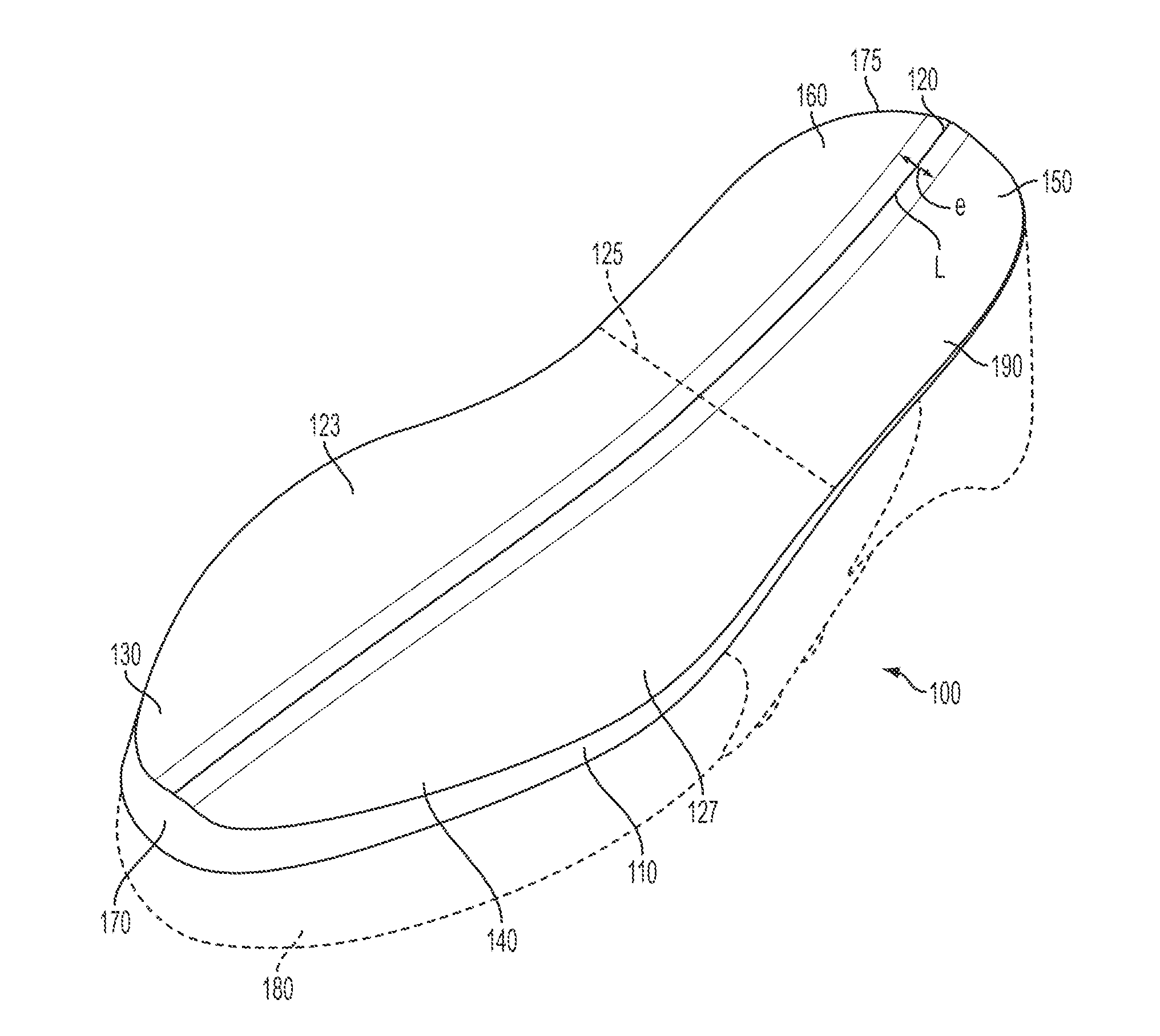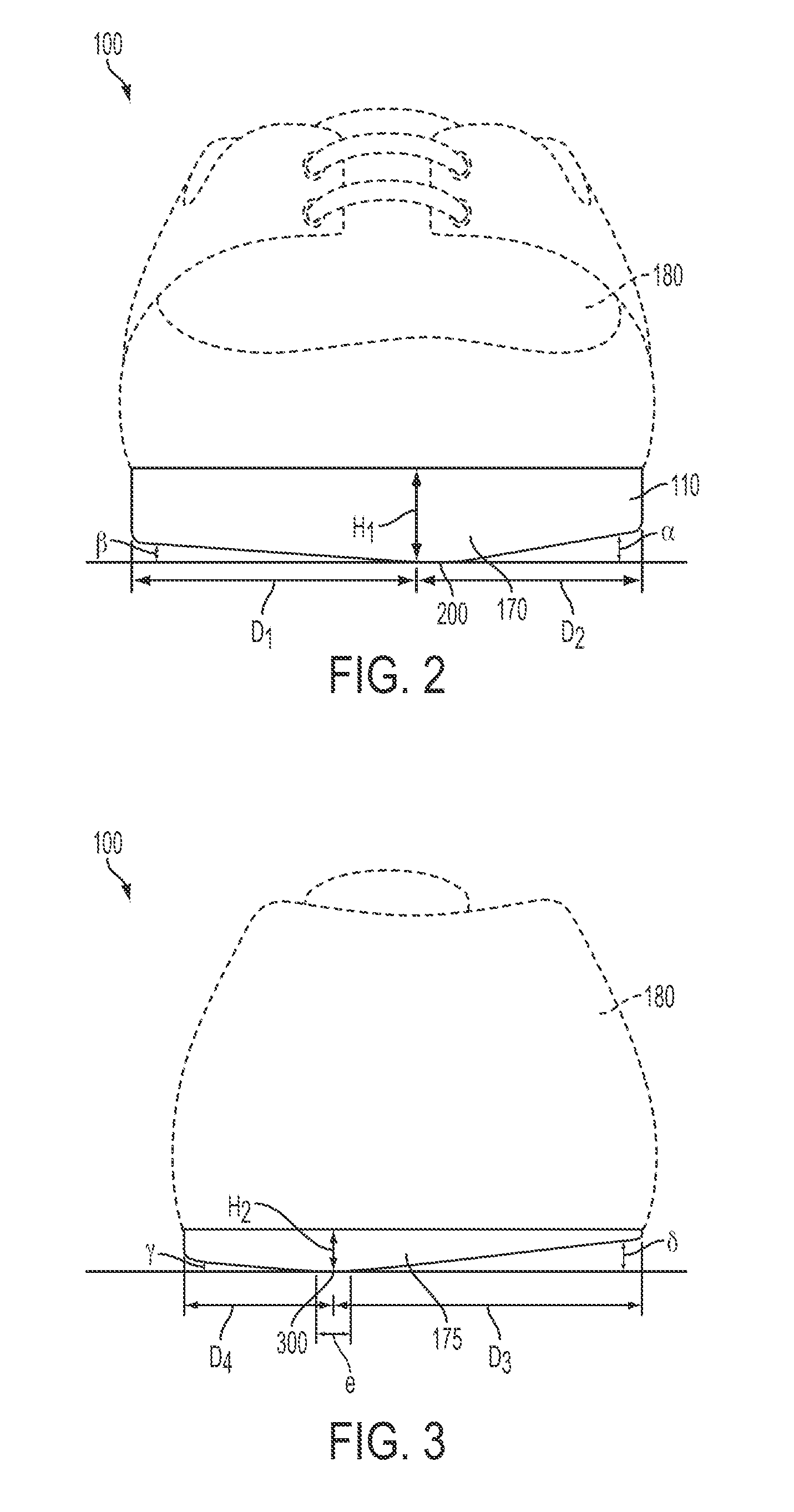Sole for a shoe and related methods
- Summary
- Abstract
- Description
- Claims
- Application Information
AI Technical Summary
Benefits of technology
Problems solved by technology
Method used
Image
Examples
Embodiment Construction
[0035]Reference will now be made in detail to exemplary embodiments of the present teachings, examples of which are illustrated in the accompanying drawings. Wherever possible, the same reference numbers will be used throughout the drawings to refer to the same or like parts.
[0036]Anatomic terms for location of body parts and motions are helpful for a variety of reasons. In the context of describing motion of a foot herein, for example, “medial” means toward the center line of the body, “lateral” means away from the center line of the body, “distal” means further from the body, “proximal” means closer to the body, “anterior” means the front of the body, “posterior” means the back of the body, “dorsal” means the top of the foot, and “plantar” means the bottom of the foot.
[0037]Considering a typical human foot, the big toe is medial and the little toe is lateral. The toes are distal to the midfoot and the midfoot is distal to the heel bone. The heel bone is proximal to the toes. The t...
PUM
 Login to View More
Login to View More Abstract
Description
Claims
Application Information
 Login to View More
Login to View More - R&D
- Intellectual Property
- Life Sciences
- Materials
- Tech Scout
- Unparalleled Data Quality
- Higher Quality Content
- 60% Fewer Hallucinations
Browse by: Latest US Patents, China's latest patents, Technical Efficacy Thesaurus, Application Domain, Technology Topic, Popular Technical Reports.
© 2025 PatSnap. All rights reserved.Legal|Privacy policy|Modern Slavery Act Transparency Statement|Sitemap|About US| Contact US: help@patsnap.com



